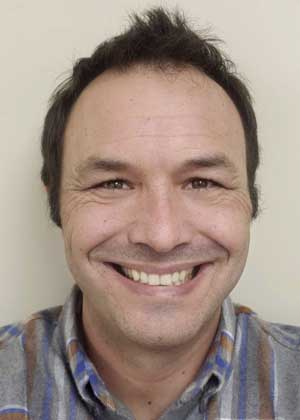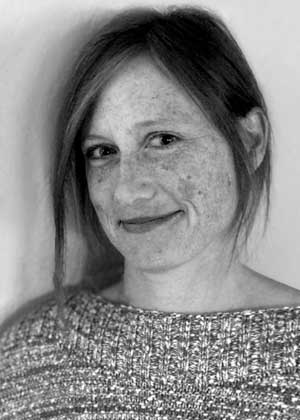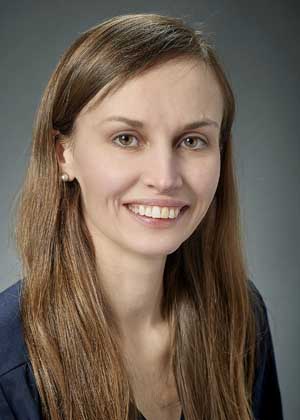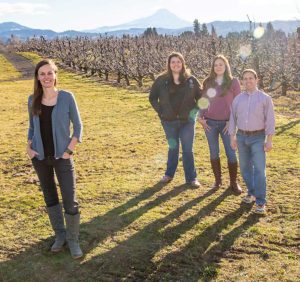The U.S. Department of Agriculture’s Agricultural Research Service hired several new scientists in Washington over the past year to work on problems facing the grape and tree fruit industries, including understanding disease pressure in the soil in grape and apple systems and postharvest physiology of pears and cherries.
Soil studies

Soil scientist Devin Rippner joined the USDA last summer for a research viticulturist position based in Prosser, Washington, jointly located with Washington State University’s Irrigated Agriculture Research and Extension Center. That location has been a huge asset, Rippner said, as his background is more soil science than viticulture.
“I’m pretty collaborative and there’s great grape scientists here at the IAREC I can collaborate with, and that lets me drill into my expertise on the soil side of things,” he said, adding that WSU viticulturists Markus Keller and Michelle Moyer have been very welcoming and helpful.
“I’m just getting my program started up and I’m interested in how management practices influence soil health and how soil health may influence grape quality,” he said.
Rippner fills a position that was previously focused on wine grape physiology and which sat empty for several years. He’s part of a larger USDA research unit based in Corvallis, Oregon, that includes many grape researchers.
A California native, Rippner earned his doctorate at University of California, Davis, looking at how soil microbial communities influenced nutrient uptake and plant growth. In a postdoctoral position with the USDA, he also worked with imaging technologies, a tool he hopes can be valuable to research questions in Washington as well.
For example, using X-ray techniques can offer insights into soil aggregates at a nanometer scale, and Rippner hopes to translate that to how they interact with plant performance at a field scale.
Soil health is a hot topic in Washington right now, as the state recently launched the Washington Soil Health Initiative, an ambitious plan to build a network of long-term soil research and extension sites for different crop systems. Rippner leads the grape effort, which will be planted in Prosser in the next year or two. Early research questions will focus on how cover crops and soil amendments such as compost influence grape quality.

Microbiologist Tracey Somera, who is based in the USDA’s Wenatchee laboratory, will also be working under the soil health initiative in apple systems. Somera joined the lab four years ago as a postdoctoral researcher under Mark Mazzola, whose program focused in recent years on the interactions between apple roots and the microorganism communities in the soil. When Mazzola retired last year, she took on the position as research plant pathologist.
Somera earned her doctorate in cell and molecular biology through a joint program at San Diego State University and the University of California, San Diego, where she studied the health of the microbial systems living in coral reefs.
“Microbes are microbes, whether you are working in marine or terrestrial ecosystems,” she said. But it’s been much more convenient to be in the heart of tree fruit country in Wenatchee and to have her study systems available right out the back door.
In recent years, Somera and Mazzola have been studying how adding mustard seed meal to orchard soils can shift the microbial community in ways that reduce pathogen pressure for years to come. Deploying the mustard meal at the scale of a commercial orchard remains an expensive proposition, she said, but research now underway aims to discover which microbes are recruited by the mustard meal and what they are doing.
“We’re just getting started as far as (understanding) the functionality of the seed meal-amended rhizosphere,” Somera said. Understanding where the beneficial functionality comes from could lead to other, less expensive ways to produce the same soil health benefits that the mustard approach offers.
Somera also plans to open new research avenues into how arbuscular mycorrhizal fungi function in orchard soil systems.
“I’m starting to look at the ways growers are using AMF products,” and if nursery trees bring AMF communities with them, she said. “In this system, no one has really figured out how to harness these guys.”
Postharvest pivot

Another new USDA hire, postharvest physiologist Rachel Leisso, also worked at several research labs in Wenatchee after she earned her doctorate at WSU, focusing on apple postharvest physiology. Now, after a stint as an assistant professor of horticulture at Montana State University, she is returning to her postharvest roots with a newly created USDA position based in Hood River, at Oregon State University’s Mid-Columbia Agricultural Research and Extension Center.
The Hood River station has a long history of postharvest research led by OSU scientists, Leisso said, but after a few years with the position empty, growers in the region began lobbying their congressional representatives for a USDA-funded position and research lab.
Leisso came on board late last year and is working to update a “blank slate” lab with the necessary, modern equipment and connect with the pear and cherry industry in the region to learn the research priorities.
The position is formally part of the Wenatchee-based tree fruit research team, marking a return for Leisso — something that attracted her to the job.
“It’s a great group of people, and who you work with makes a great difference,” she said.
She’s connecting to ongoing research projects led by colleagues, including a survey of pear packing house practices led by WSU postharvest physiologist Carolina Torres, for example.
“I’m hoping to have a lot of contact with the industry to understand what their needs are,” Leisso said. “We’re grateful to stakeholders who worked with Congress to make this position happen. There’s a good history of postharvest scientists in Hood River, and I hope to continue that.”
—by Kate Prengaman







Leave A Comment